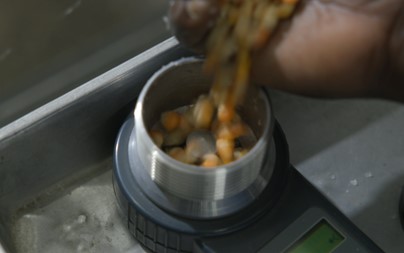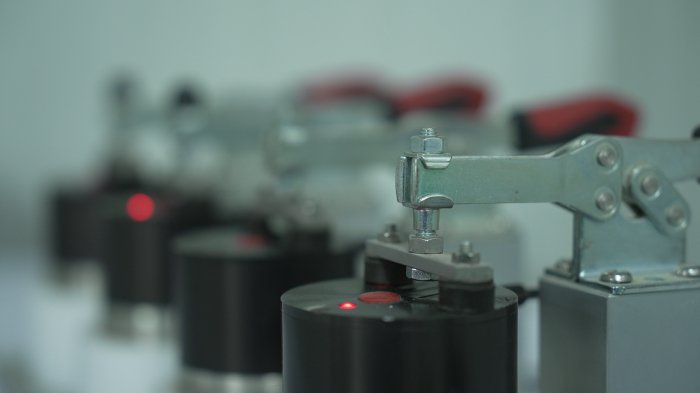Alternatives to the gravimetric method

A moisture meter provides an alternative method of measuring the amount of water in seeds. Instead of attempting to address the question directly, a moisture meter measures the moisture in seeds indirectly, using a measure such as capacitance or conductance of the seeds. Moisture meters are quick and easy to use. They can be non-destructive, and they do not require large samples. They do, however, require regular calibrating against the oven method.
A water activity meter is based on the idea that a sample of seeds will always reach equilibrium with the air around it. It is quick to use, and although more expensive than the moisture meter, it is more reliable. Water activity meters measure the equilibrium of water vapor in the air around the seeds rather than removing water from the seeds themselves, so are completely non-destructive. Like the moisture meter, water activity meters need to be calibrated regularly.
Watch this video about measuring water in seeds. It explores the different contexts in which genebanks take measurements of water in seeds, and the different techniques they use to do so. As you watch, think about the different types of information about the behavior of water in seeds that scientists at IITA and IRRI need to know.

Transcript: Video 1: measuring water in seeds
Please write your comments about what kinds of information scientists in the video learn from their measurements of water in seeds. You should spend up to ten minutes on this. If your reflections on the video raise any questions, please post them on the Forum, where the course moderators will be able to help you.
When you are ready, press 'reveal' to see our comments.
Discussion
In this documentary, you saw measurements of water being used to obtain different types of information. In the field, they are used to help determine the best time to harvest, especially in climates where there is only a narrow window in which it is possible to harvest. They are also used in the drying room, to determine when the seeds are dry enough to go into storage. You may have noticed how portable and convenient the moisture meter is for these two purposes. The water activity meter, by contrast, gives a different type of information: a more accurate idea of the kind of biochemical reactions going on inside seeds. It can tell you, for instance, when seeds are gearing up for germination, or when they are quiescent, and in a good state for storage.
Measuring water in seeds
